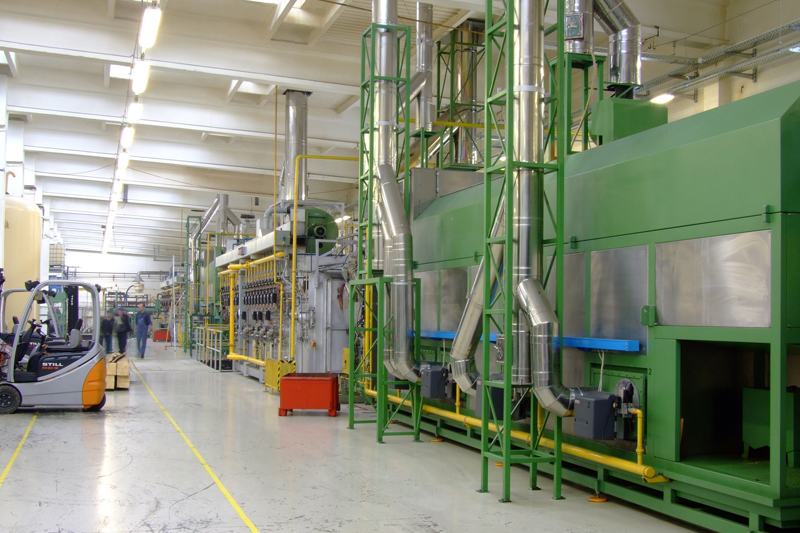Paul Foulkes, Country Manager at Theben Automation, asks whether smart homes need dumb services.
Everyone is talking about smart homes. Manufacturers can offer you the best heating control, or the most function packed lighting system. Sometimes, these ‘smart’ systems are no more than a light bulb, dependent on a hub, and Wi-Fi via your router. Hot water is supplied via a ‘smart’ water tank, run by artificial intelligence (AI). AI is the new “best thing since sliced bread”, following on from ‘smart’ or ‘green’. The big house builders talk about ‘smart,’ but they actually want to avoid paying for any building infrastructure, apart from maybe an additional telephone point upstairs.
Lot 20 regulation requires electric radiators to reach a minimum level of efficiency via inbuilt control mechanisms, including thermostats, timers, and even motion detection. The radiator manufacturers then add in (understandably) as much programming as possible, including Wi-Fi connection options. This can mean sometimes an additional hub is required and the system runs a proprietary protocol. Updates can lead to systems becoming obsolete and no longer supported. Individual wet radiators do not require this level of control complexity, but sometimes the boiler has a built-in control timer system.
I know of hot water systems that apparently use AI to time the hot water! Just for a second think about your domestic hot water (DHW) use. Most households will have regular times of use – we generally have routines in our day-to-day life. So maybe just a timer would be suitable? With an override when we are out of routine? So, maybe we need fewer smart services? How about getting back to dumb appliances controlled by one smart system?
Layer of control
Mechanical Ventilation and Heat Recovery (MVHR) is the perfect example for this. MVHR systems are super simple – two DC motors, in a box connected to trunking. No high pressure connections, no refrigerant fluids, no complex manifolds and valves. Once it is installed correctly it can be left to run on its own. But if you add a layer of control on top of the simple MVHR unit it can become more effective – the boost function can be controlled around humidity monitoring in defined rooms or occupancy to tackle CO levels (normally there is a humidity sensor in the MVHR unit which controls the boost, but it is distant from the humidity source). Boost can also be activated when the kitchen extractor has been running for a certain length of time to help clear cooking smells and the summer purge can be linked to occupancy and temperature average across the whole home. It is not only the actual running of the system that can be controlled; maintenance schedules, such as predicting the filter change based on hours run, can also be included.
I use MVHR as an example of how a ‘dumb’ product can be made to act smart. A single device will be measuring the CO readings used by the MVHR, but those CO levels could also be used to open roof windows for extra passive ventilation. Those same devices measure room temperature so not only can it be used for MVHR and summer purge ventilation control, but obviously also for heating. And that same temperature reading, when used in conjunction with lux levels, can be used for shading control – to prevent overheating in the summer but to use passive solar gain in the winter, reducing energy use.
All of this does not require multiple smart products, it is actually easier, and far cheaper, to use dumb products with one smart control system. You don’t need a sophisticated (and probably high priced) AI-enabled hot water tank. You can simply read tank temperature (at different physical levels if it is a thermal store type installation with multiple heating coils and sources) and then create simple schedules around usage, or complex ones around usage, occupancy, most effective heat sources (solar thermal, solar PV ‘dump’, battery storage or supply tariff). And of course it is easy to add a simple hot water boost. Once established these ‘routines’ can be left alone, or tweaked as often as you want.
If your tank fails (rare, but it is a possibility), then the replacement cost is considerably less. You just need a simple dumb tank.
Rinse and repeat
Wet heating systems using a boiler and radiators invariably rely on an external time clock, as most gas boilers are ‘dumb’. If you add a Wi-Fi connected programmer the system becomes ‘smart’, or at least smarter. But why depend upon Wi-Fi? Our routines around heating our homes are virtually as repetitive as those around our hot water usage. Honestly, you don’t need AI for this! Add Wi-Fi functionality if you want to for additional features, but there is no need to depend upon it.
Back to electric heating: this would require a regulation change, but imagine the simple, and cost effective change over to electric heating if you could install dumb radiators with a centralised timer and programmer. Also, as mentioned about MVHR ventilation and wet heating systems, you could then integrate it into a complete home system, for instance utilising occupancy for further energy savings.
High installation cost is often cited as a reason not to choose integrated smart home systems. This can be true, typically because when a client decides on a ‘smart home,’ they tend to add a significant level of additional functionality or luxury, such as a cinema room (neither of which is essential). However, for a simple home, if you want to save energy, improve comfort, and add some additional functionality, this can be done at a reasonable price. Install dumb service appliances and the initial outlay drops. Factor in simplified wiring that is faster to install and single devices for all control elements, and the total installation cost can become easily attainable. And that simplification reduces ongoing cost and dumb service appliances, as previously mentioned, will reduce the cost if any fail.
Where does this all leave us? With ‘smart’ service appliances the outcome can be that some smart homes are a collection of disparate systems and gadgets, multiple apps and different manufacturers viewpoint of the best way to simplify your life. On the other hand, if you use one simple smart control protocol, you could utilise dumb services.
Linking an effective, robust, open control protocol to dumb services really does make sense.
For more information, click here





